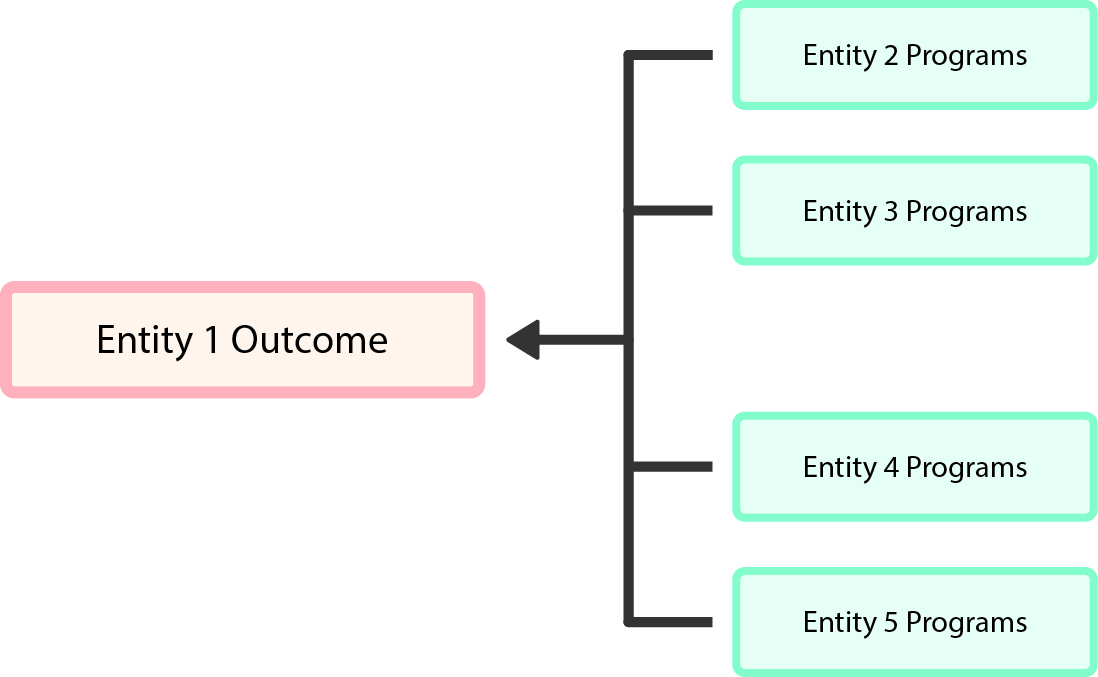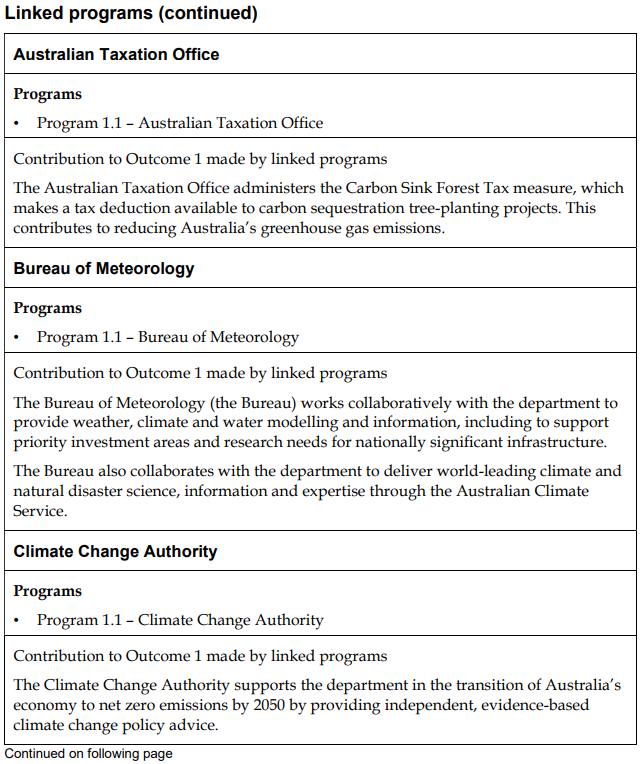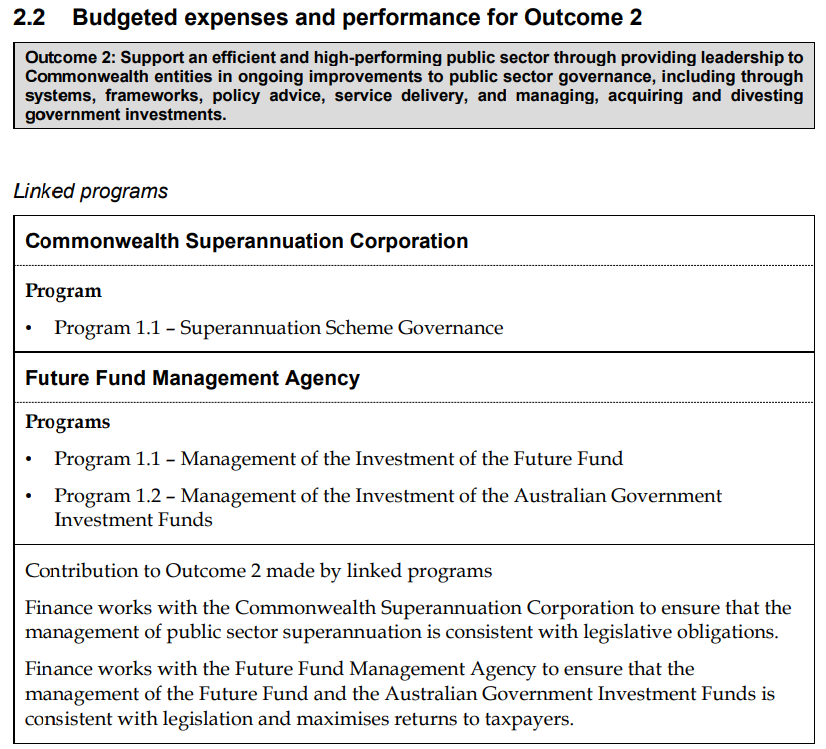Key points
Direction 5 requires the entity to report ‘linked programs’:
- For each outcome, report the programs of other entities that link to that outcome.
Reporting linked programs
Linked programs are reported to provide the Parliament with a sense of how the programs delivered by other entities assist the reporting entity achieve their Outcomes. Put another way, linked programs display how programs delivered by other Commonwealth entities contribute to common government objectives.
This aligns with the requirements of section 17 of the PGPA Act, where the accountable authority of an entity has a duty to encourage officials of the entity to cooperate with others to achieve common objectives.
It also aligns with section 16E of the PGPA Rule where the accountable authorities of entities are required to report in the corporate plan details of any organisation or body that will make a significant contribution towards achieving the entity’s purposes through cooperation with the entity.
For further information on corporate plans, including the ‘Cooperation’ required element, see RMG-132 Corporate plans for Commonwealth entities.
Linked program reporting is one-way reporting by design and is restricted to entities that produce Portfolio Budget Statements. Your entity reports how the activities undertaken through the programs of other entities assist your entity in achieving its outcomes. It is not reporting how activities undertaken through your entity’s programs assist other entities achieve their outcomes.

Identifying linked programs
There is no set way in which to determine what a linked program is, this is left to the judgement of individual entities. There are a number of ways an entity might approach identifying linked programs.
One is to look at contributions made by other entities to assist an entity achieve its Outcomes from a thematic or cluster perspective. Examples of this are entities who work together to achieve common objectives in respect to national security, health, welfare and infrastructure to name a few.
A related approach is to view contributions to common objectives through Budget measures as expressed in Budget Paper No. 2, which shows funding provided to various entities involved in the delivery of a measure where this is a common objective.
Another approach is to consider where data, research and evidence is drawn from to develop and adjust policy settings to ensure outcomes are achieved. This might include data, research and evidence provided by entities such as the Australian Bureau of Statistics, the Bureau of Meteorology, the Australian Institute of Health and Welfare or the Australian Institute of Family Studies to name a few.
Entities should work together to agree on linked program reporting.
Linked Programs template
Entities should report their linked programs using the Linked programs template (available under Tools and templates). The text in the template describes what information is to be provided.
The template and an example are included in the PBS Guide to preparing the Portfolio Budget Statements (available under Tools and templates).
Contribution to Outcome text
The information included under the heading ‘Contribution to Outcome X made by linked programs’ should provide the reader with an understanding of how the linked program makes a contribution to the successful delivery of the entity’s Outcome X. Where linked programs are covered by a cross-entity arrangement (such as a Memorandum of Understanding) or an intergovernmental agreement (such as a National Partnership Agreement) the name of this arrangement should be referenced in the contribution made by linked programs.
Examples - Linked programs
The following examples demonstrate different ways to present linked programs.
The Department of Climate Change, Energy, the Environment, and Water report their linked programs under Outcome 1 in the 2024–25 Climate Change, Energy, the Environment, and Water Portfolio Budget Statements (page 31). In this example, the contribution text appears directly below each entity and the relevant program.
The Department of Finance report their linked programs under Outcome 2 in the 2024–25 Finance Portfolio Budget Statements (page 28). In this example, the contribution text is consolidated into one box.



